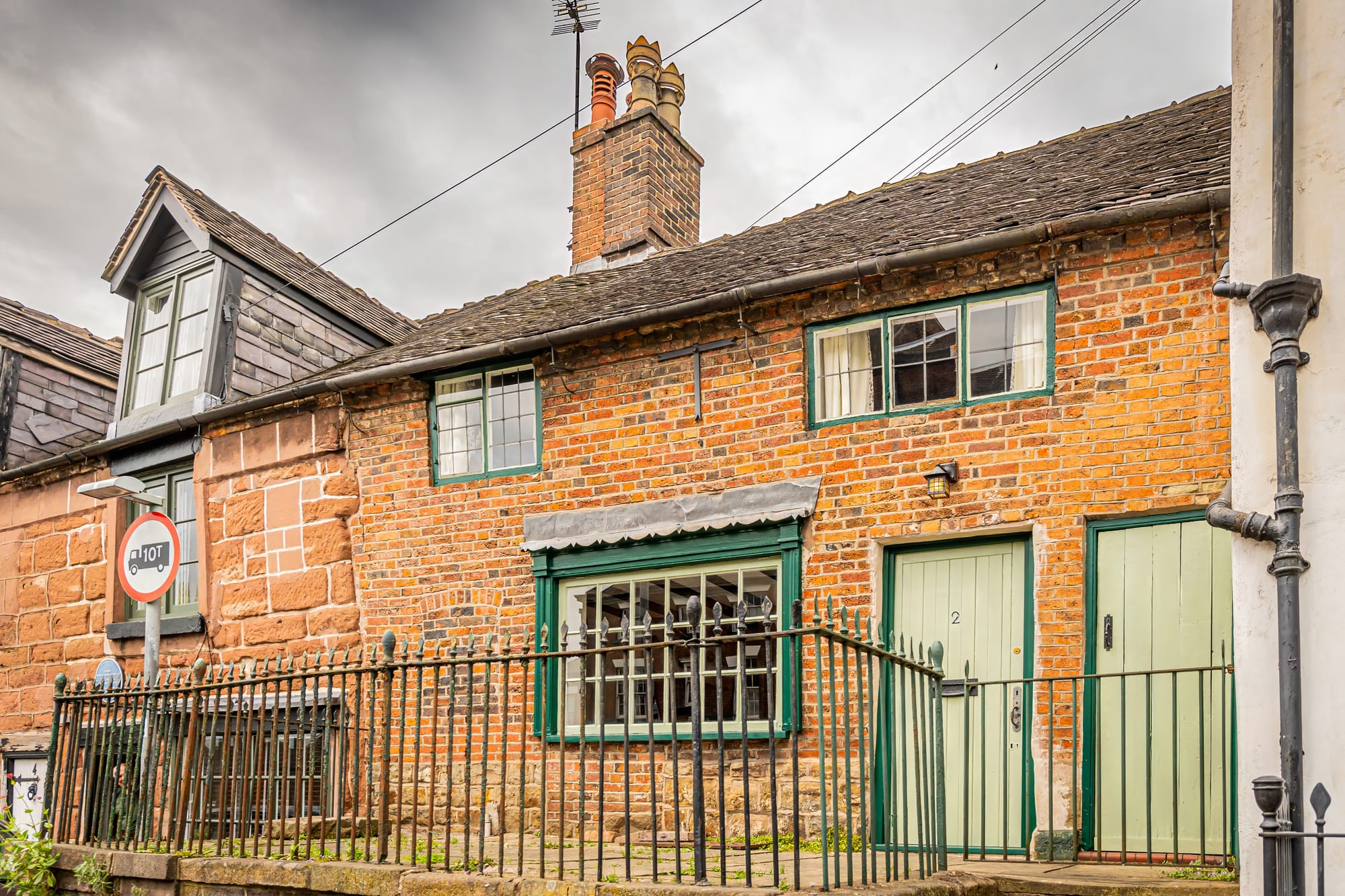Nestled in the heart of Leek, Staffordshire, Nos. 2-4 Clerk Bank is more than just a row of charming cottages; it is a window into the rich history of this town. Dating back to the 15th century, this building is the oldest surviving in Leek, apart from St Edward’s Church, and it stands as a testament to Leek's vibrant past. Their history encompasses architectural evolution, various uses over centuries, and a fascinating glimpse into the lives of past residents.
Watch my video on YouTube
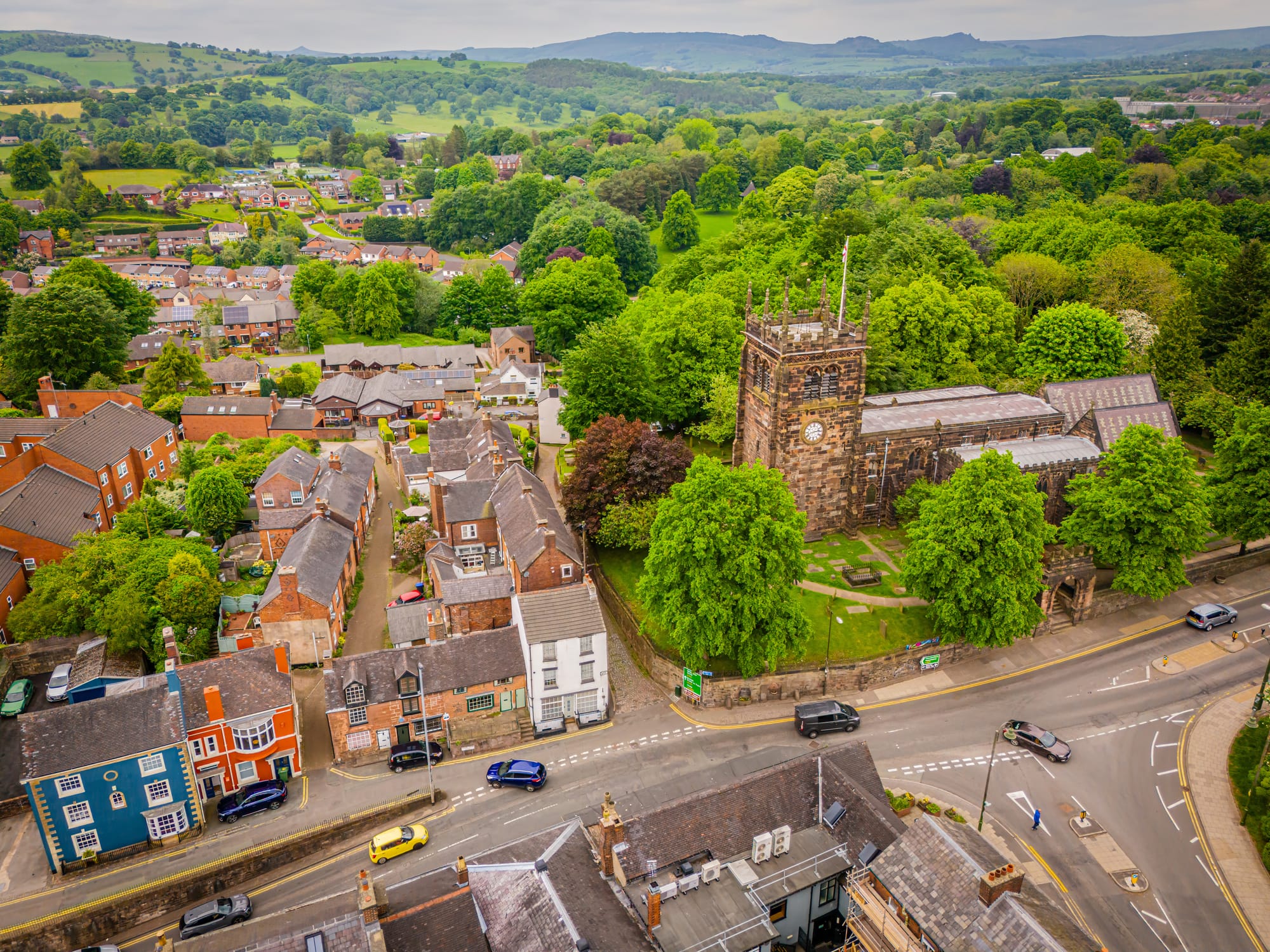
Historical Background of Leek
In the 1400s, Leek was a modest yet significant settlement characterised by its agricultural roots and burgeoning market economy. With a market charter granted in 1207, the town became a vital hub for trade and commerce. Farmers, artisans, and merchants gathered to exchange goods, fostering a sense of community and connecting Leek to broader economic networks. The town's economy was predominantly rural, with local farmers cultivating staple crops and livestock farming contributing to the wool trade. St. Edward's Church, dating back to the 13th century, played a central role in the community's social and religious life.
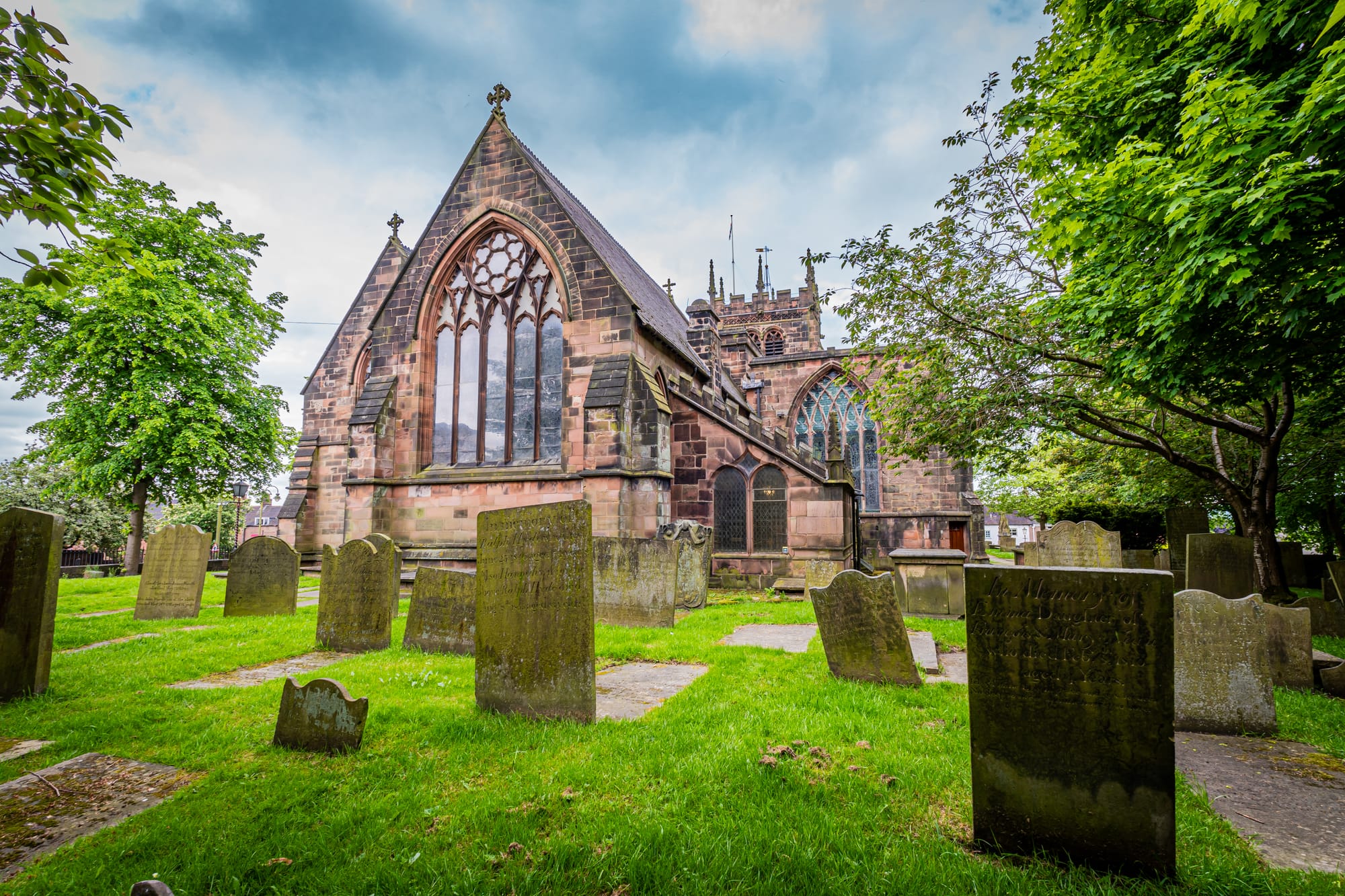
Leek’s strategic location at the junction of several roads made it an important commercial centre by the 13th century. The market began in 1207 and was a significant aspect of the town’s economy, allowing local farmers and merchants to trade goods. The weekly markets and annual fairs were essential for trade and commerce, with goods ranging from agricultural produce to handcrafted items. These markets provided necessary supplies for the local population, fostered a sense of community, and connected Leek to broader economic networks.
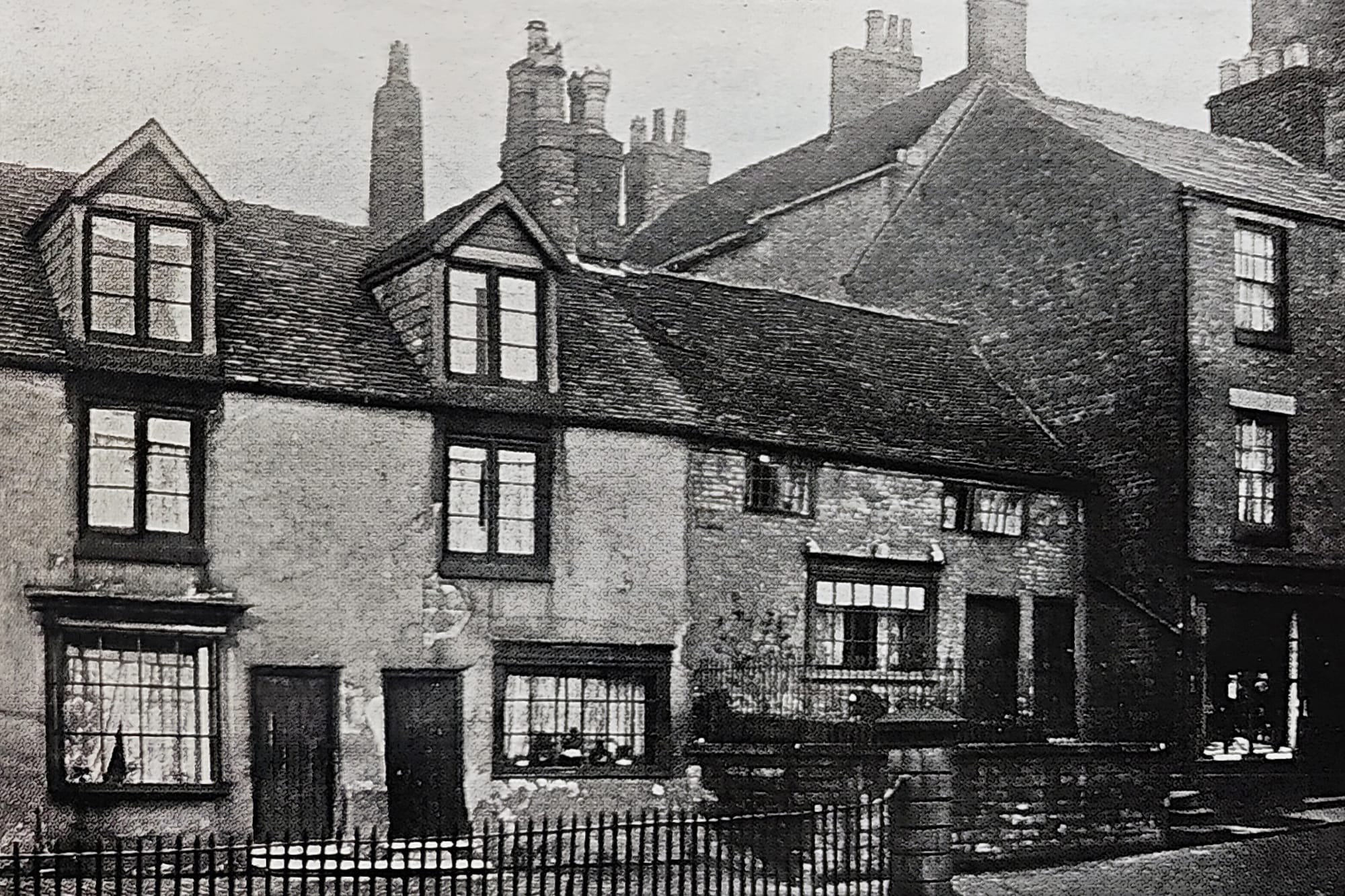
Historical Background of Clerk Bank
Clerk Bank, an ancient way to Dieulacres Abbey, holds significant historical importance. The name, sometimes written as "Clerk's Bank," suggests a route used by clerics travelling between the Abbey and St. Edward's Church. This historical pathway highlights the area's ecclesiastical connections and the daily life of clerics in medieval Leek. The road’s name evokes images of clerics trudging through the mud, especially during the wet months when the Churnet River overflowed, making the journey even more arduous.
Archaeological Significance
Leek's history extends back to prehistoric times, with evidence of human activity including at least one Bronze Age barrow. The Cock Low barrow, excavated in the mid-19th century, revealed a cinerary urn, indicating the long-standing significance of this area. Other archaeological finds, such as urns and flint implements, provide glimpses into the town's ancient past. These discoveries underscore the historical depth of the area, showing that Leek has been a site of human activity for thousands of years.
By the 13th century, the town had become a stopping place for the Earls of Chester, the lords of Leek Manor. The granting of a weekly market and annual fair by King John in 1207, followed by the establishment of Dieulacres Abbey in 1214, marked significant milestones in the town’s commercial and social development. The monks of Dieulacres Abbey renewed the borough charter in 1232, underscoring the abbey's influence on the town’s growth.
The town's layout in the 13th century consisted mainly of the area around the marketplace and the streets leading off it. The convergence of roads on the northwest, southwest, and east sides suggests that Leek may have had a hard boundary, perhaps an earth bank pierced with gates. Despite a ravaging fire in 1297, the town’s plan remained largely intact.

Development Through the Centuries
By the early 17th century, Leek was noted for its market, one of the three most important in Staffordshire by the 1670s. However, the buildings were described as 'but poor and for the most part thatched', reflecting the modest living conditions of its inhabitants. The town continued to grow, with settlements expanding along the road to Macclesfield and the road to Newcastle-under-Lyme. Suburbs developed, such as Mill Street, known as 'the hollow lane' in the 17th century, and Abbey Green Road, which led to Dieulacres Abbey.
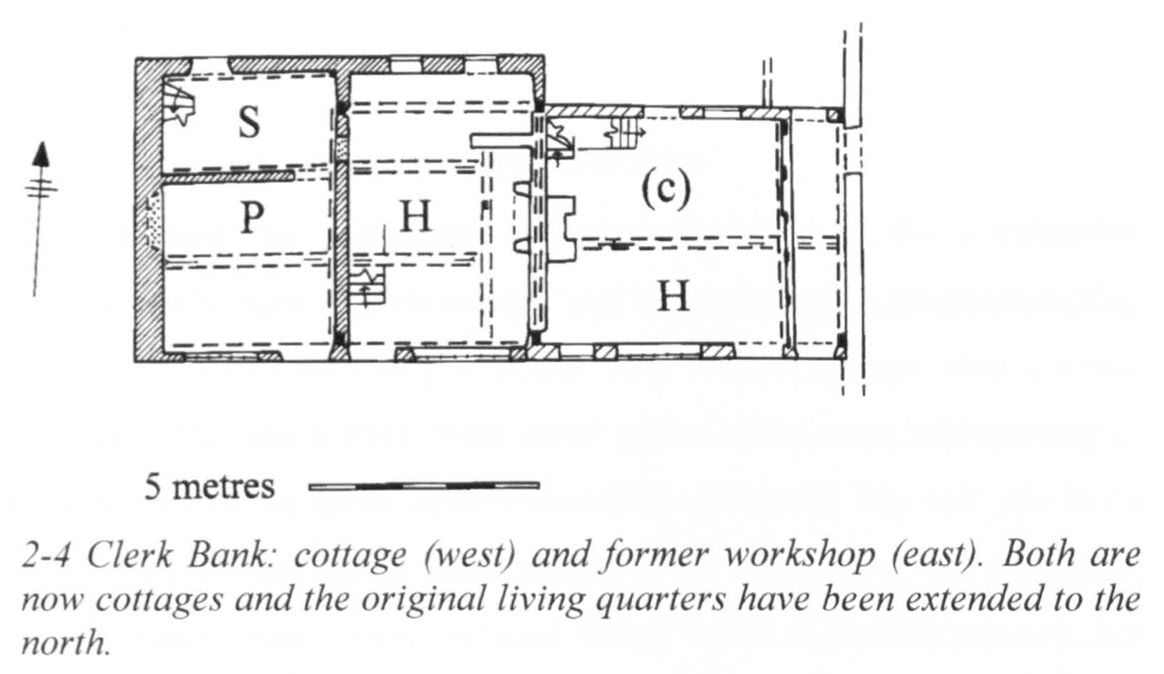
Architectural Features and Evolution of Nos. 2-4 Clerk Bank
Constructed around 1460, Nos. 2-4 Clerk Bank were originally built as a single dwelling. This early construction is one of the oldest surviving examples of cruck-framed buildings in Leek, showcasing medieval building techniques that included timber framing combined with wattle and daub and a thatched roof. Over the centuries, the structure was extended and subdivided, reflecting the evolving needs of its inhabitants. These timber-framed buildings, although later encased in stone or brick, retain elements of their original medieval architecture. Notable features include an undercroft cellar with street shoots, which were likely used for coal and flour deliveries. The row of cottages is now Grade II listed.
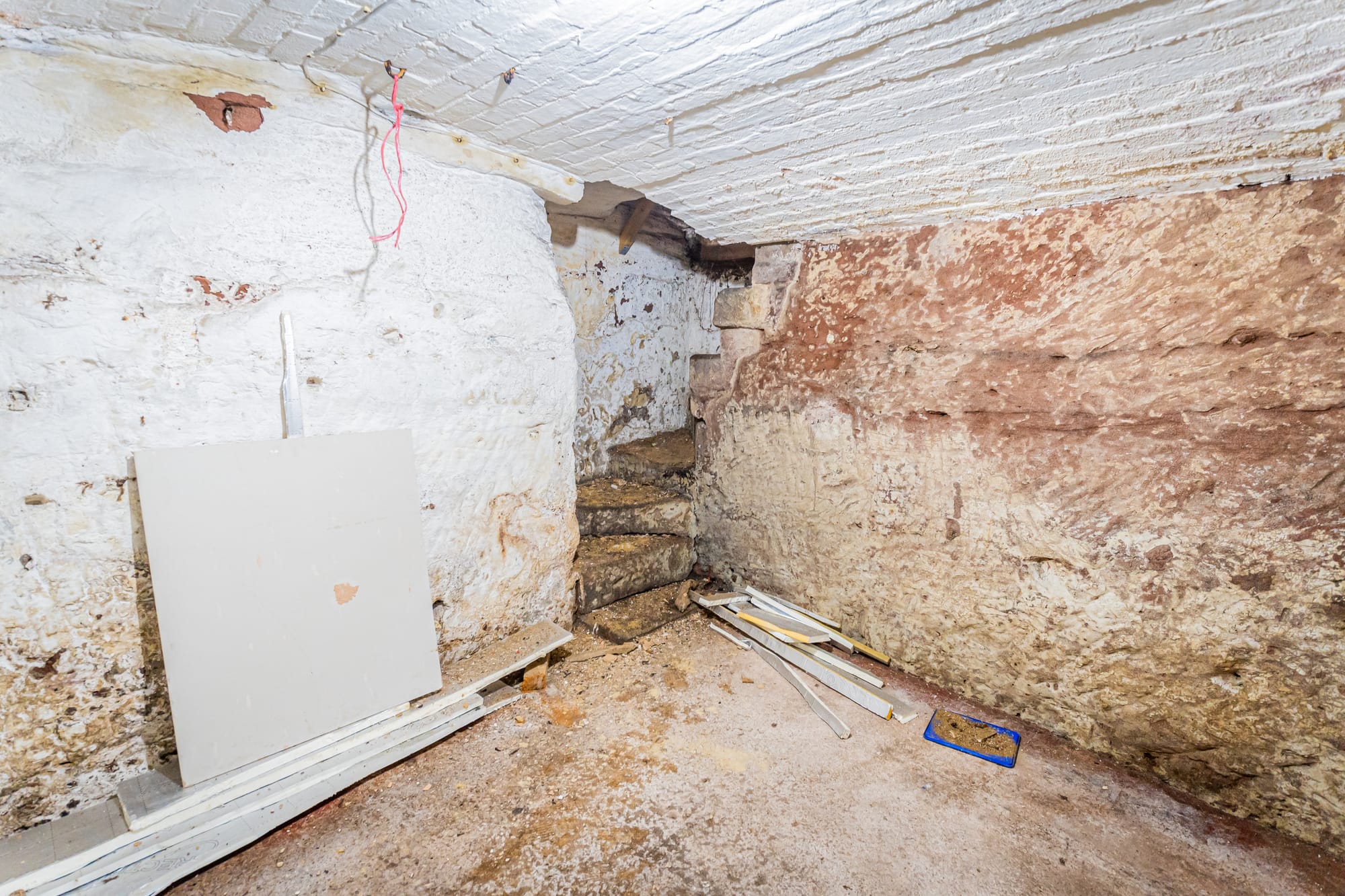
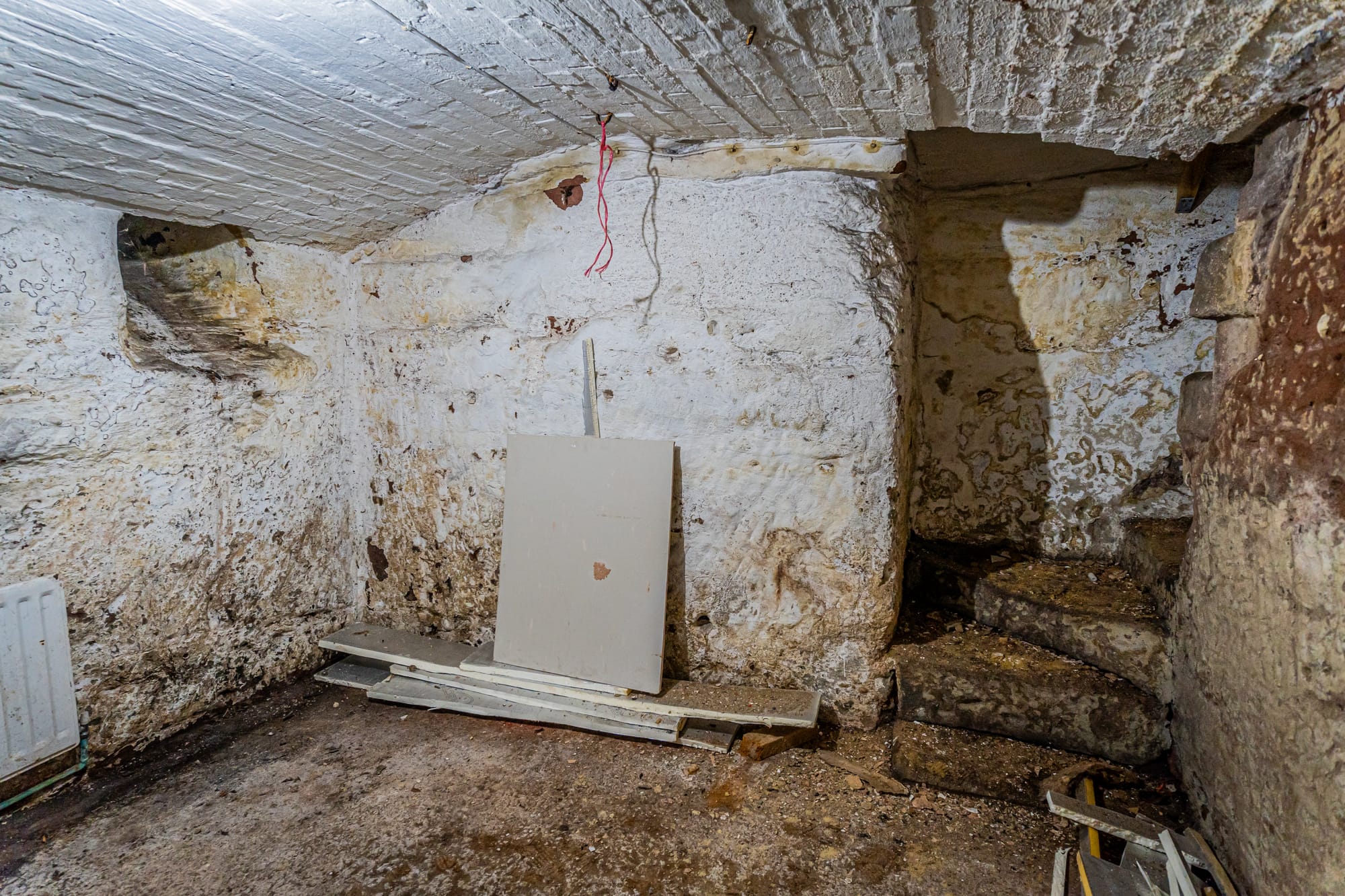
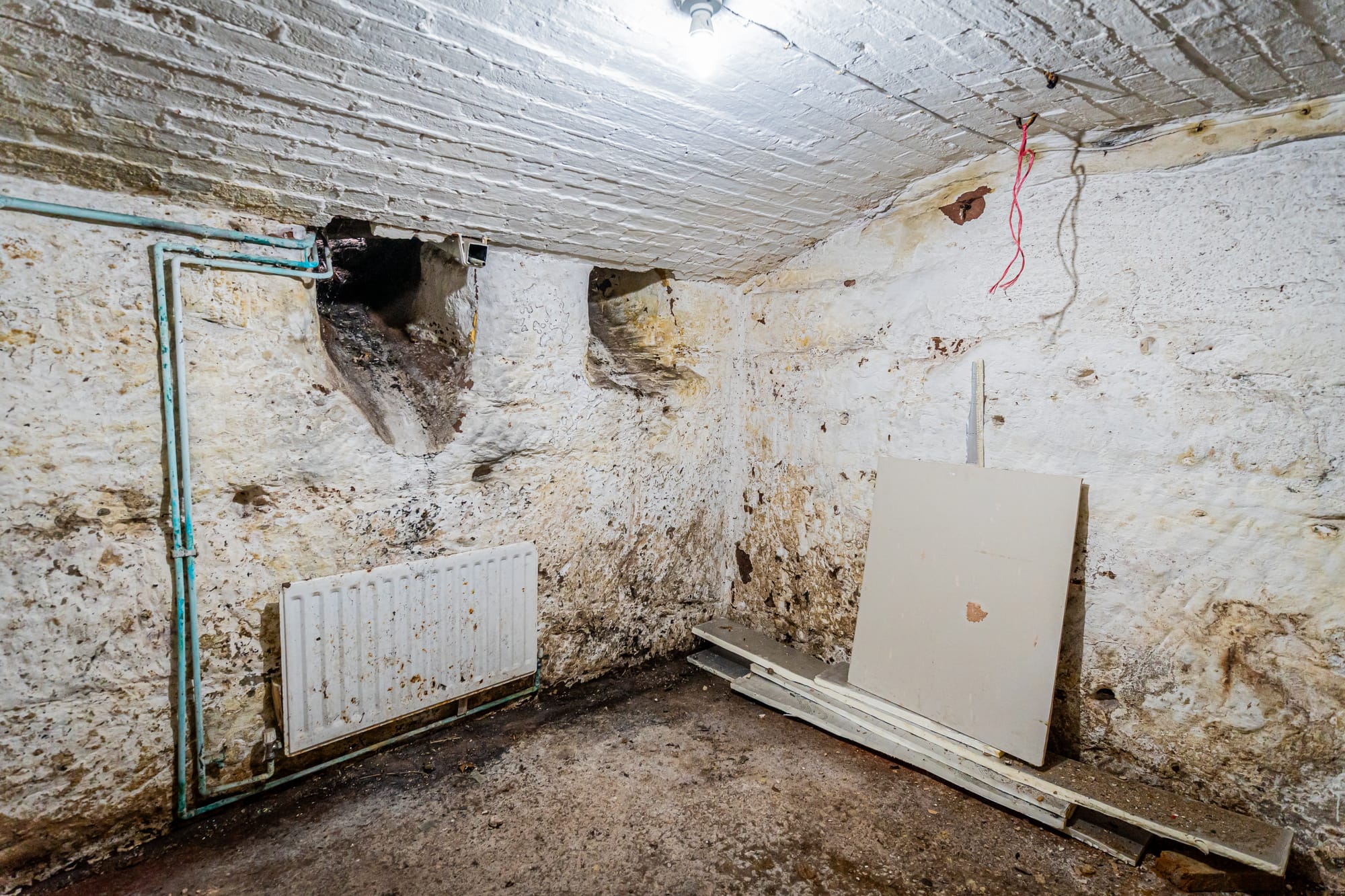
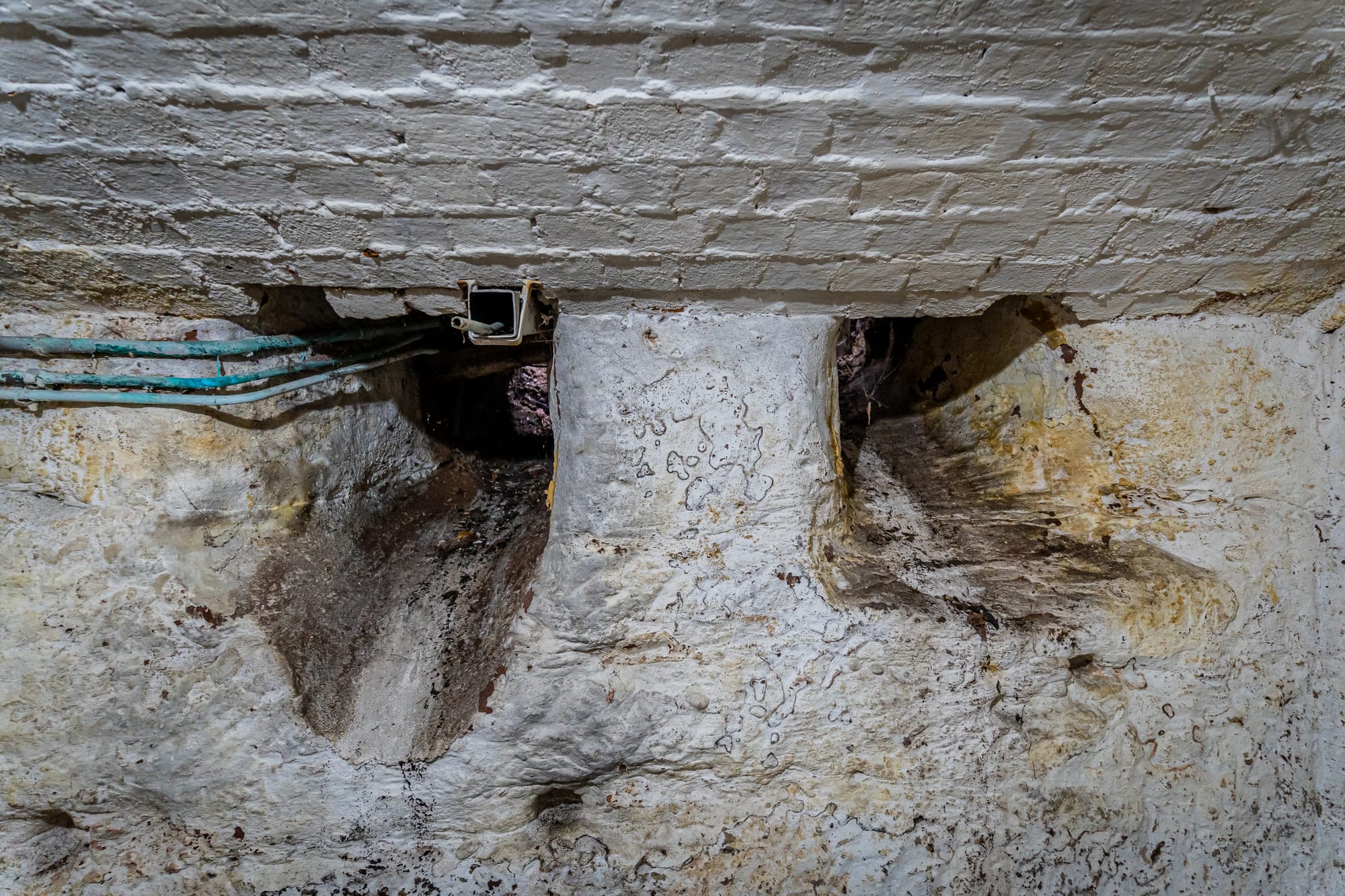
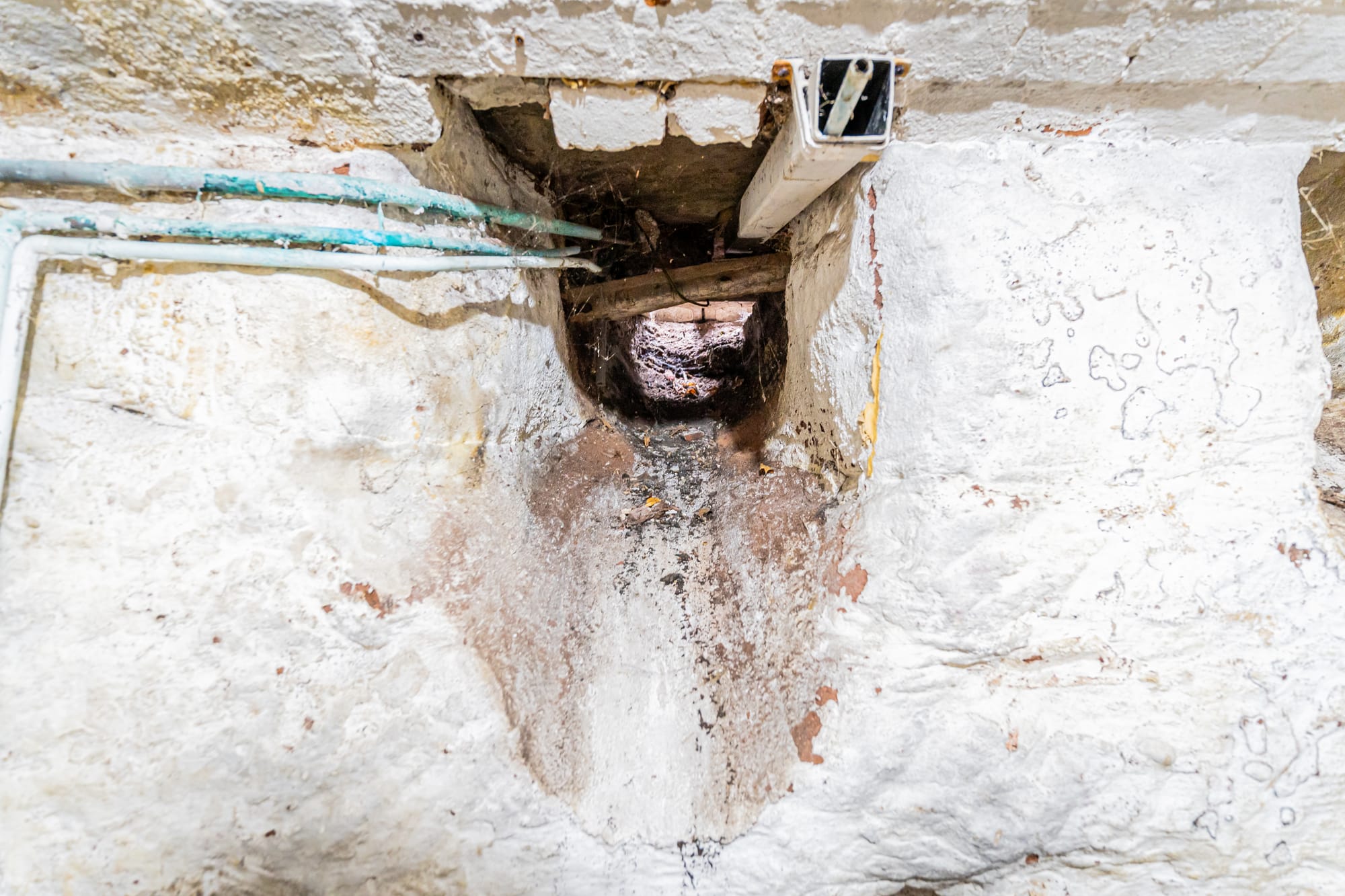
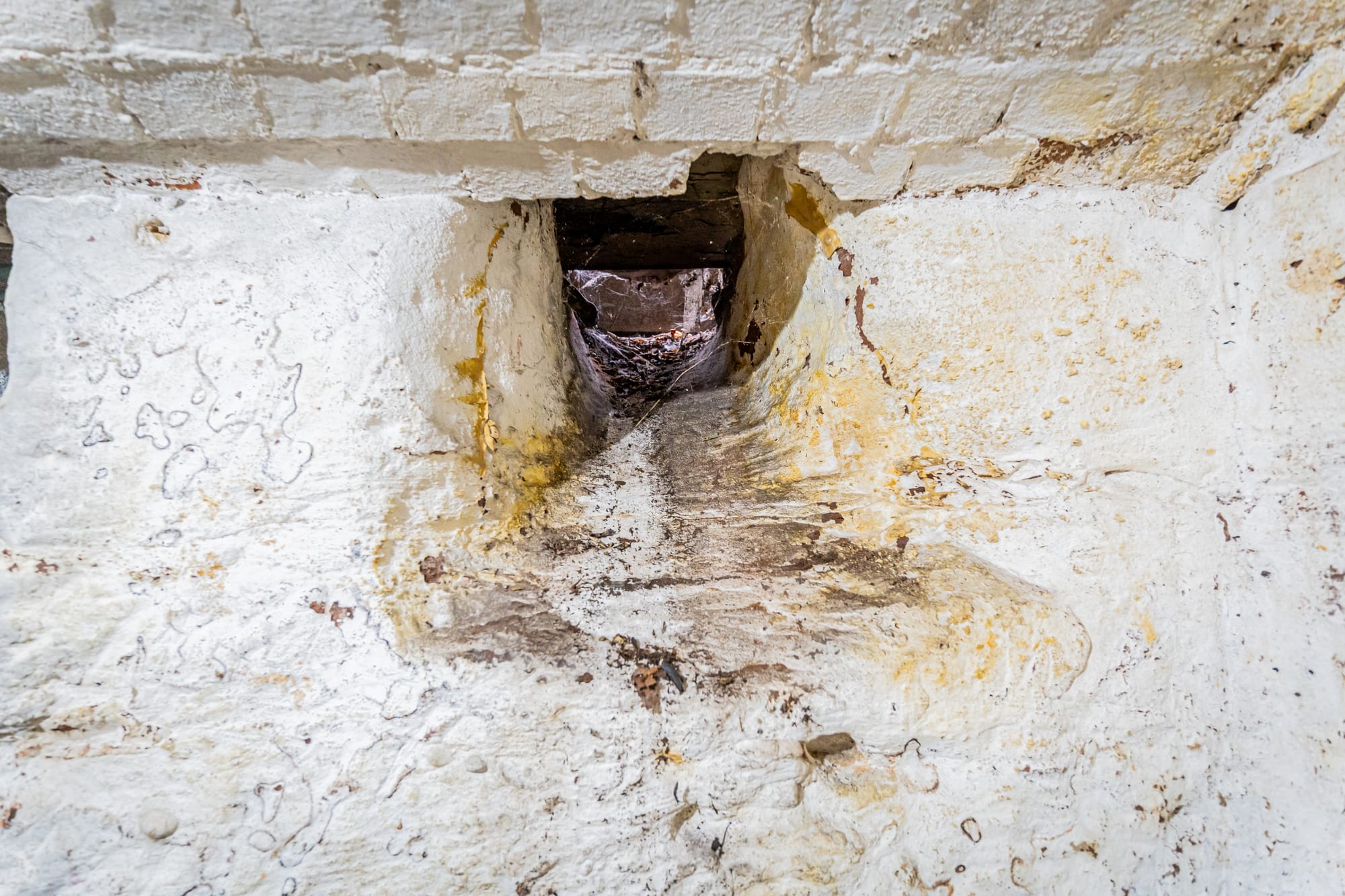
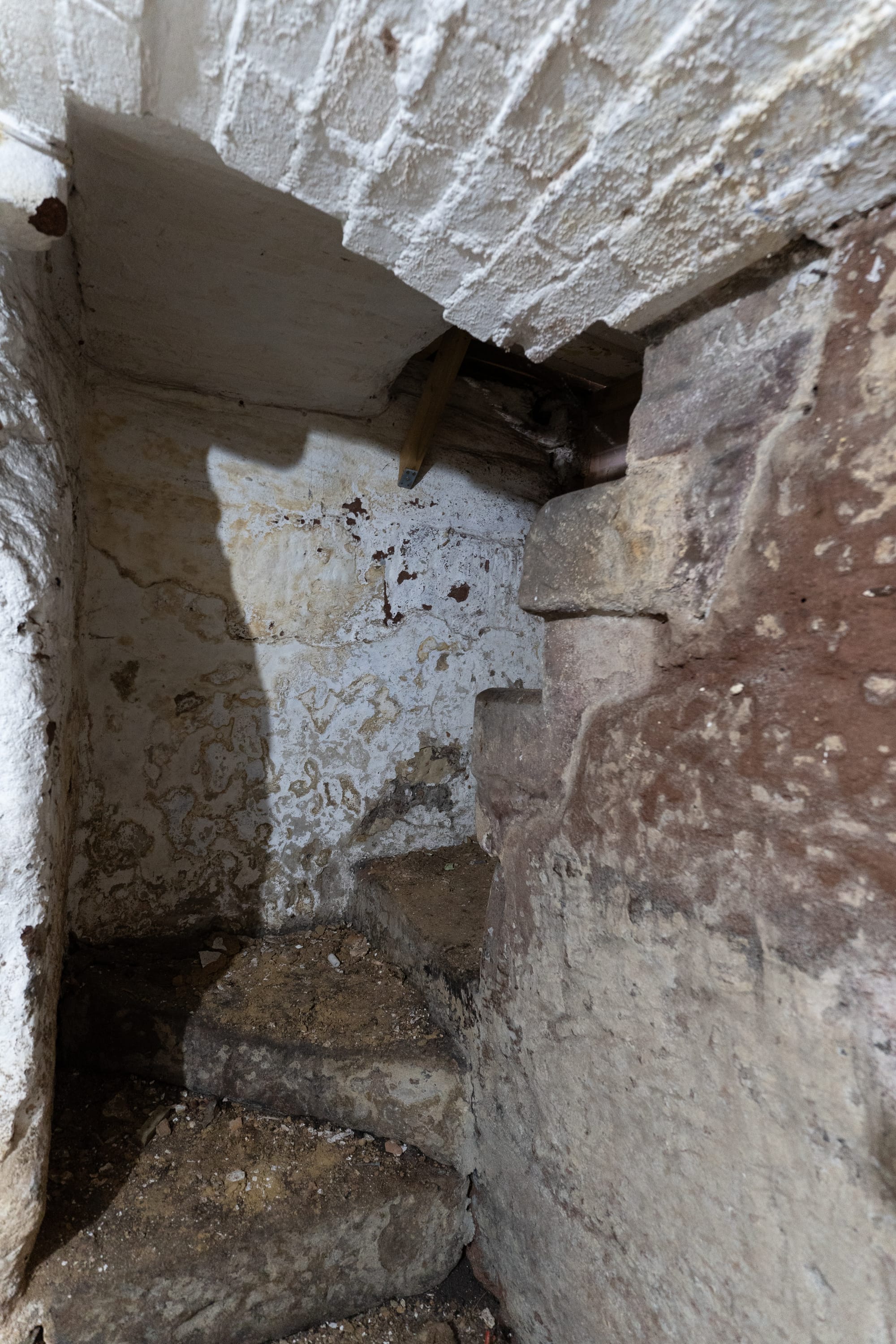
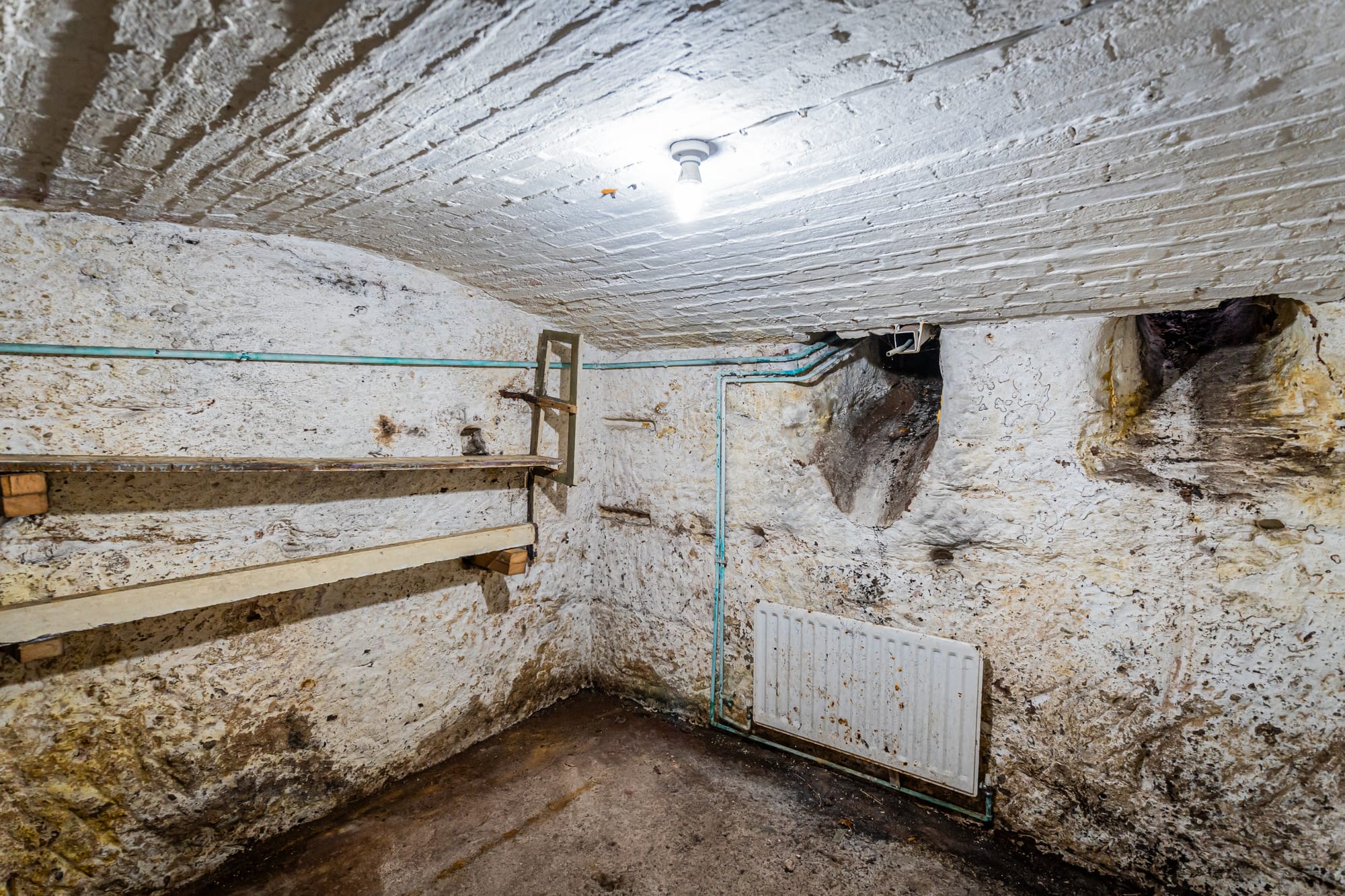
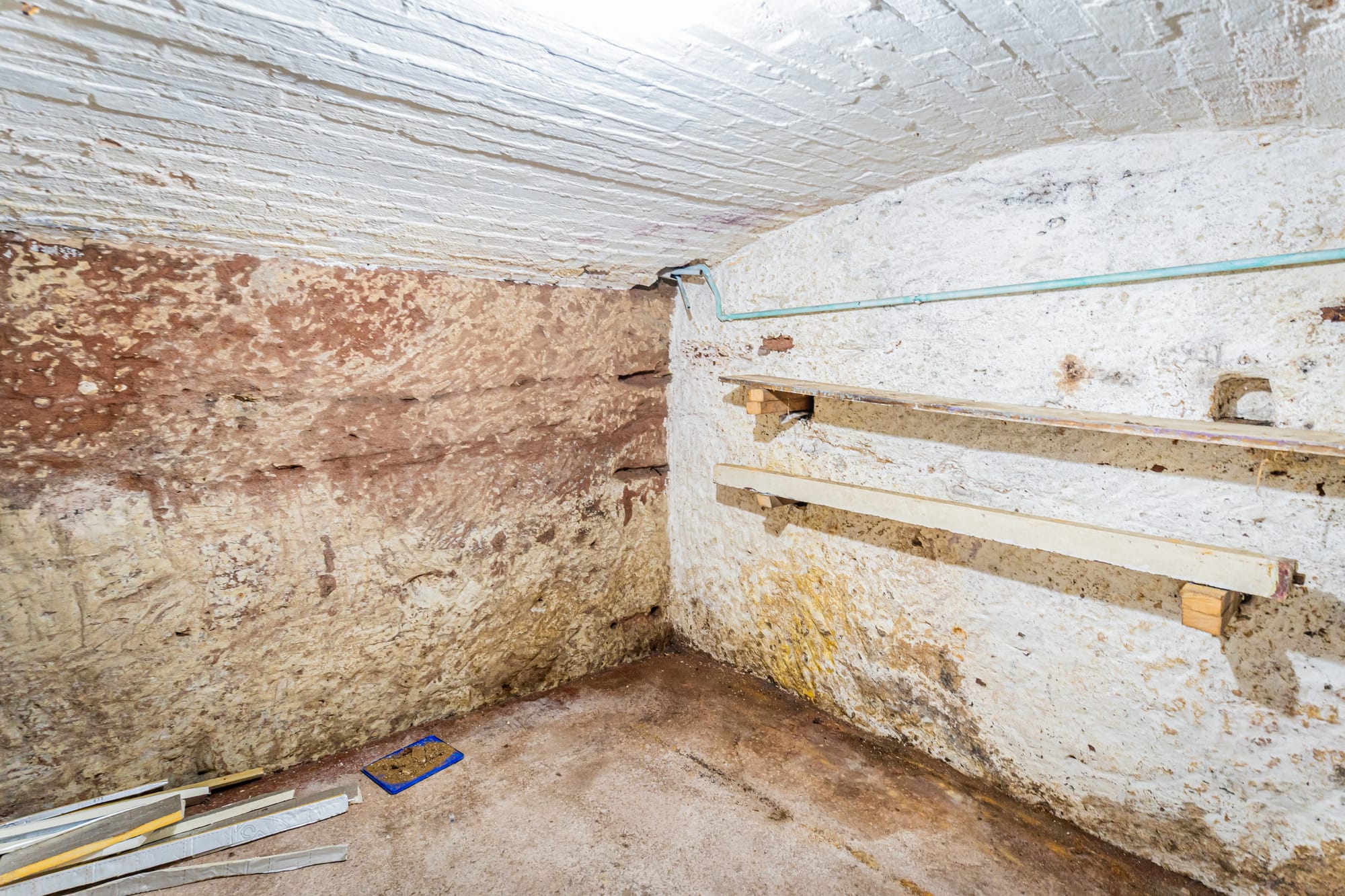
The shoots in the cellar of No 2 Clerk Bank, Leek
The cruck-framed buildings of Leek are particularly significant. Cruck frames, constructed using naturally curved timbers, were a common method from as early as 1066. The oldest surviving cruck-framed building in England, Cruck Cottage in Shropshire, dates back to 1269. Nos. 2-4 Clerk Bank, with timber of various felling dates, represents a well-preserved example of this technique, illustrating the architectural heritage of Leek.
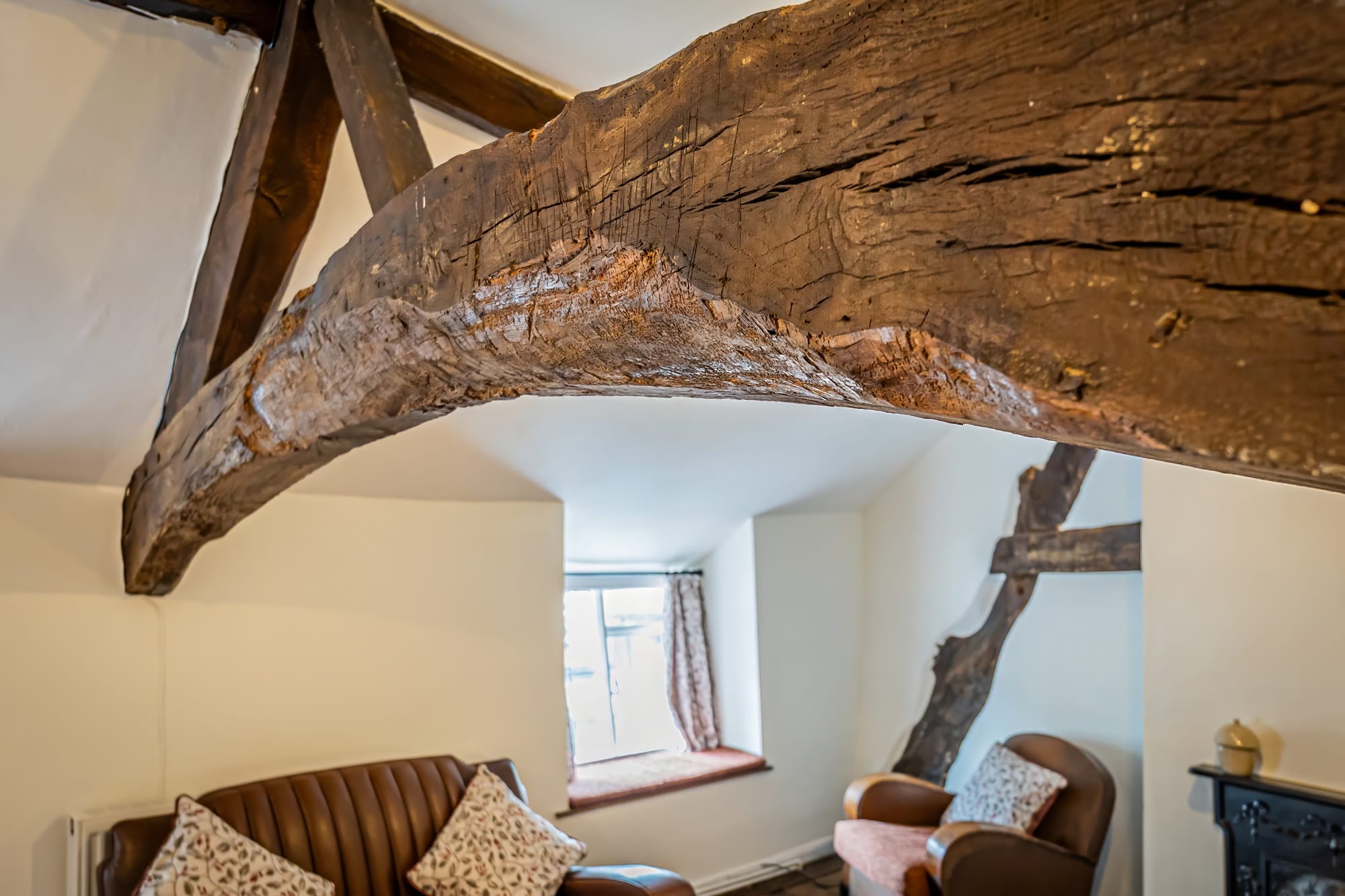
Initially built as a single dwelling, the structure was subdivided during the 19th century. No. 2 became a workshop, reflecting the building's adaptability to the needs of its residents. The transformation included significant architectural changes, such as the addition of a large fireplace and a timber staircase turret. Further modifications included the refacing of the buildings in stone in the 18th century, adding to their robust appearance. No. 2 was adapted to include a shop window, reflecting its use as a workshop and later as a retail space.
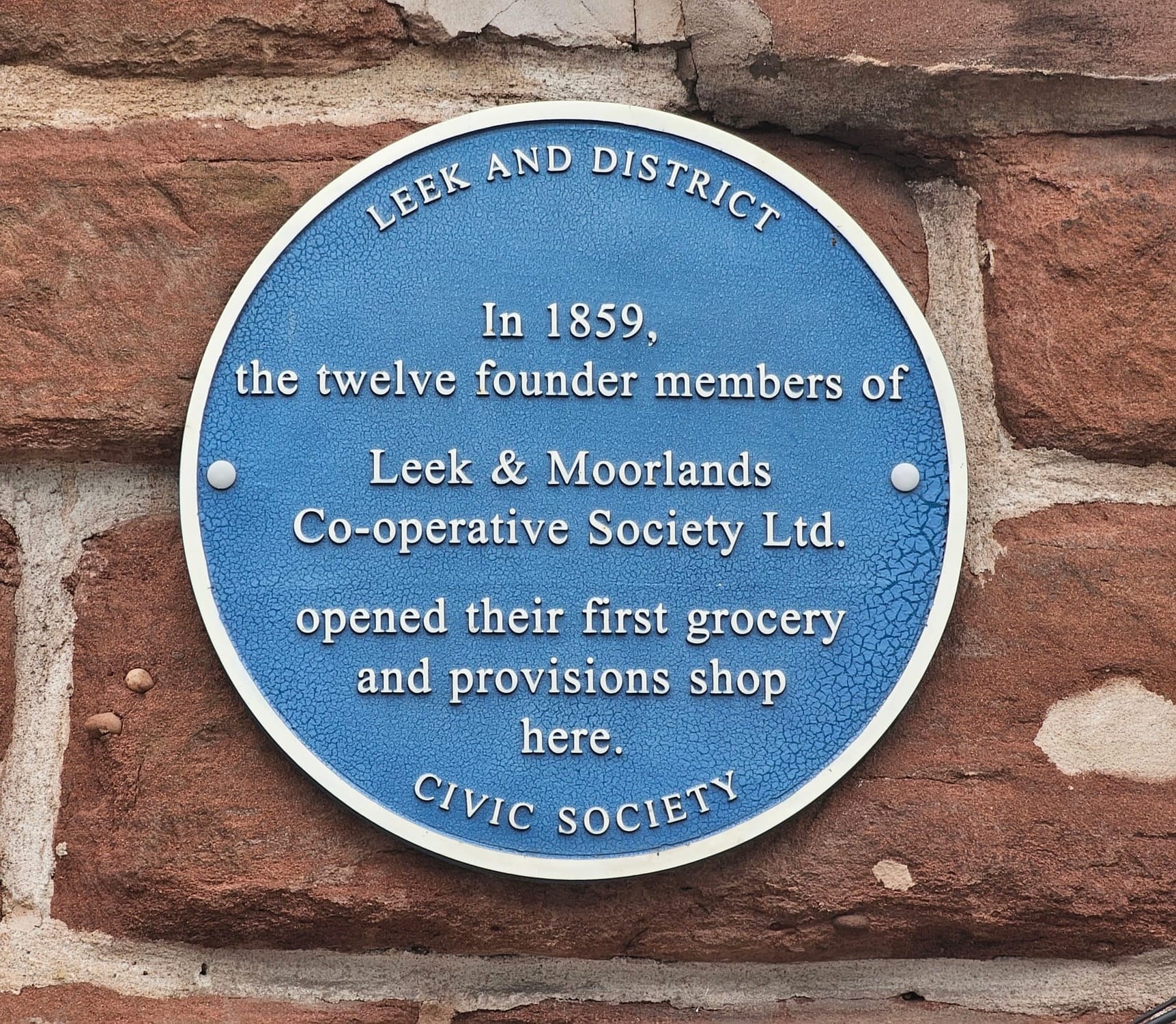
Historical Uses of Nos. 2-4 Clerk Bank
Over the centuries, Nos. 2-4 Clerk Bank have seen various uses. In 1859, the cottages served as the first premises for the Leek and Moorlands Co-operative Society. This cooperative movement aimed at improving local trade and community welfare, marking a significant chapter in Leek's social history.
The Co-op's founding in these cottages is a testament to the entrepreneurial spirit of the town’s residents. The society, initially formed by twelve local men, set about decorating and furnishing the shop on Clerk Bank. Their efforts were successful, and the shop quickly became too small, prompting the move to larger premises on Overton Bank in 1860. This early success laid the groundwork for the society’s expansion and enduring influence in the region.
The establishment of the Leek and Moorlands Co-operative Society in the cottages at Nos. 2-4 Clerk Bank is a testament to the entrepreneurial spirit of the town’s residents. Opening its doors in 1859, the Co-op quickly outgrew these premises, moving to larger facilities by 1860. This early success laid the groundwork for the society’s expansion and enduring influence in the region. The society was initially formed by twelve local men who became the first shareholders, each contributing a pound, some putting in a shilling a week until they reached the total. These pioneers then set about decorating and furnishing the little shop on Clerk Bank and, with the help of their wives, stocked it with goods for sale.
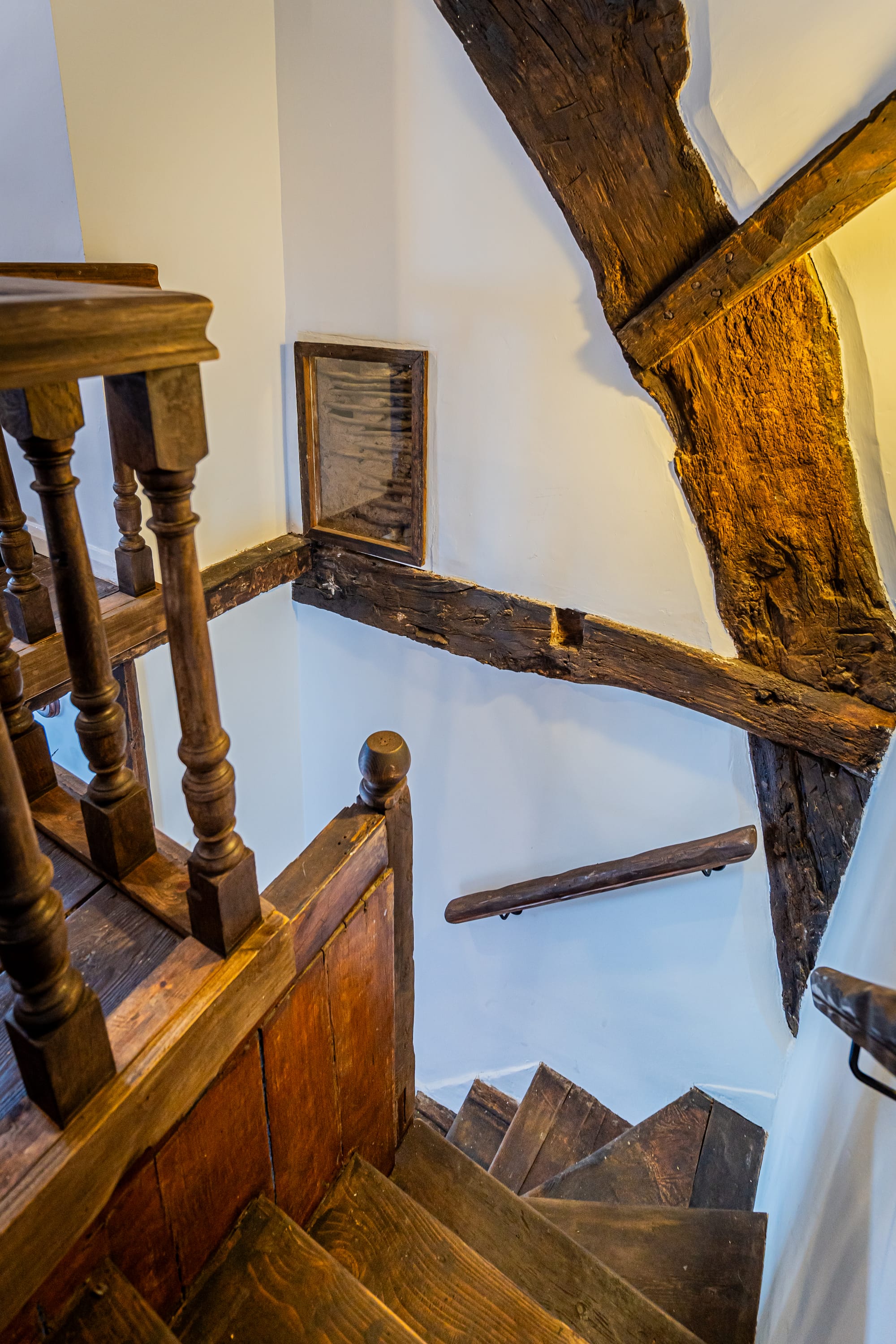
Notable Residents of Nos. 2-4 Clerk Bank
Throughout its history, Nos. 2-4 Clerk Bank have been home to a diverse array of residents, each contributing to the rich tapestry of Leek's heritage. The lives and stories of these individuals reflect the evolution of the cottages from residential homes to commercial spaces and back, showcasing their adaptability and significance in the community.

George Caley (1841)
In the 1841 census, George Caley lived here with his family. He is listed as a baker, which may explain the shoots in the basement, as one seemed to be for coal, and one for flour.

Isaac Clowes (1881)
In 1881, Isaac Clowes, a bootmaker, resided at No. 2 Clerk Bank. He lived there with his children and a boarder named Sarah, who worked as a silk picker. The 1881 census provides a detailed snapshot of their lives, illustrating the cottage’s dual role as both a home and a place of business. Isaac Clowes was a widower, balancing his professional responsibilities with raising his family. Sarah's presence as a boarder highlights the common practice of lodging workers in homes, and integrating work and living spaces. This period exemplifies the cottage’s function as a versatile dwelling, accommodating both familial and economic activities.

John Charles Maguire (1911)
In 1911, the cottage at No. 2 Clerk Bank was home to John Charles Maguire, a lithographer printer from Dublin, and his family. Maguire’s occupation as a lithographer indicates the presence of specialised trades in Leek during the early 20th century, showcasing the town's diverse economic activities beyond its agricultural roots.
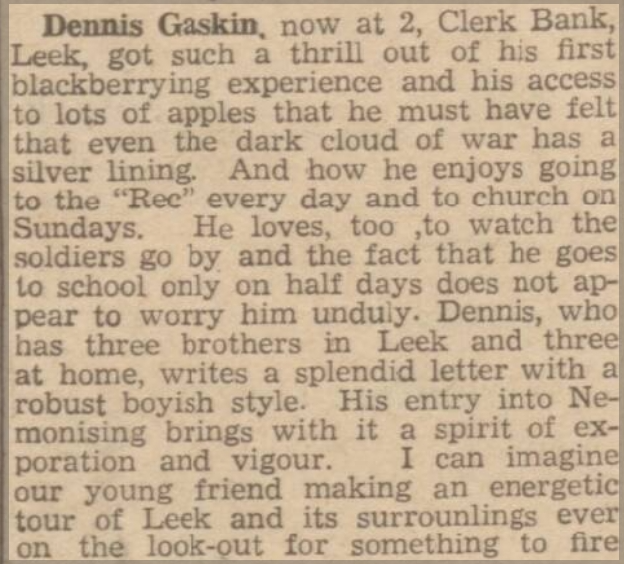
Dennis Gaskin (World War II)
During World War II, No. 2 Clerk Bank served as a refuge for evacuees. A boy named Dennis Gaskin was evacuated to this address, experiencing rural life in Leek amidst the turmoil of the war. His time in Leek, marked by activities such as blackberrying and apple picking, offers a poignant glimpse into the era. Despite the war's challenges, Dennis and his brothers found freedom and safety in the countryside, reflecting the resilience and adaptability of Leek's community during times of national crisis.
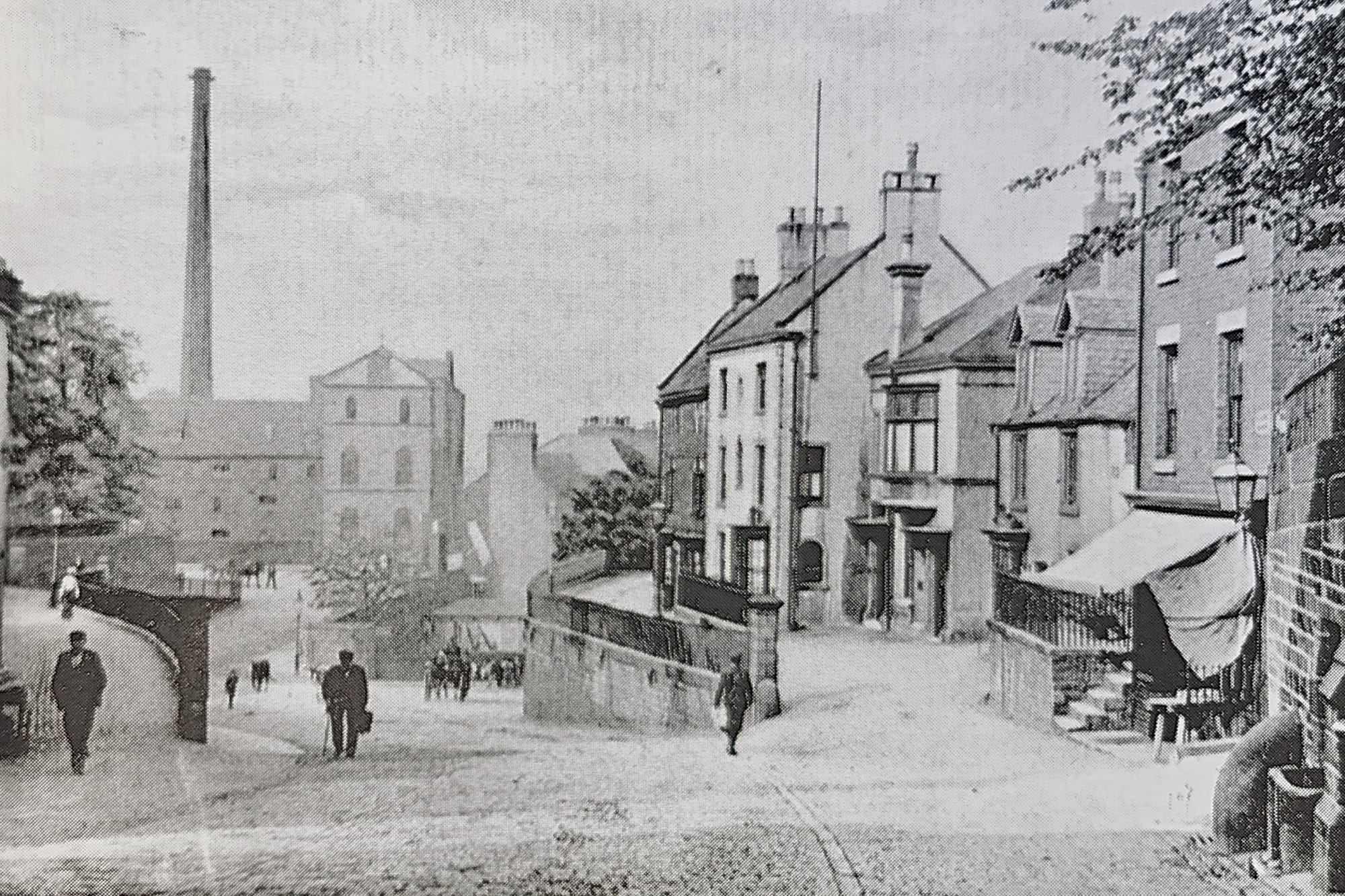
Rumoured Pub: The Horse and Jockey
Adding to the cottage's intriguing history are claims that No. 2 Clerk Bank once operated as a pub named the Horse and Jockey. Although historical records verifying its use as a pub are scarce, this anecdote adds a layer of mystery and charm to its storied past. The reference to the Horse and Jockey evokes images of a simple alehouse, serving local mill workers with jugs of cloudy, hop-filled beer, contrasting sharply with today's clearer brews.
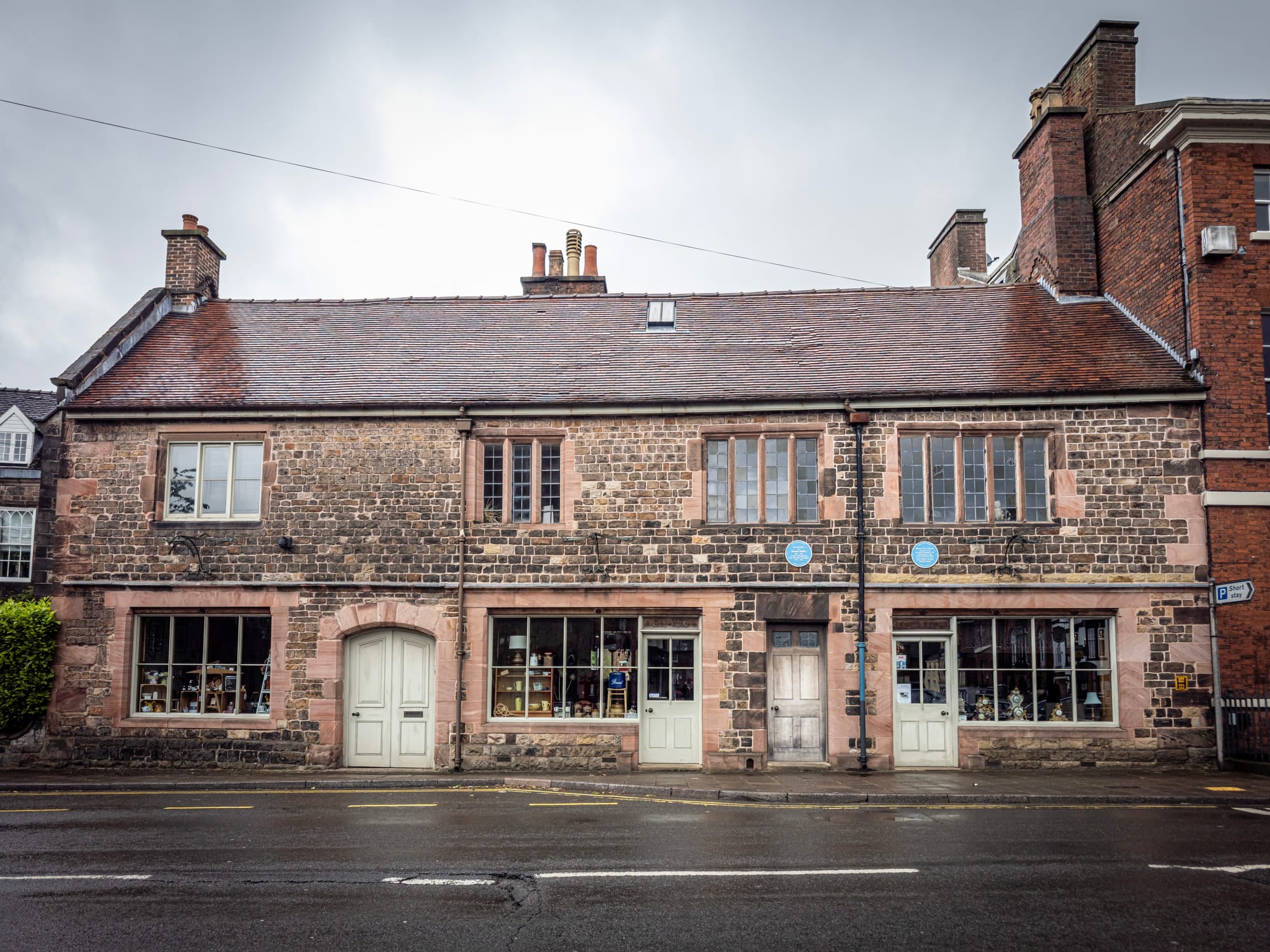
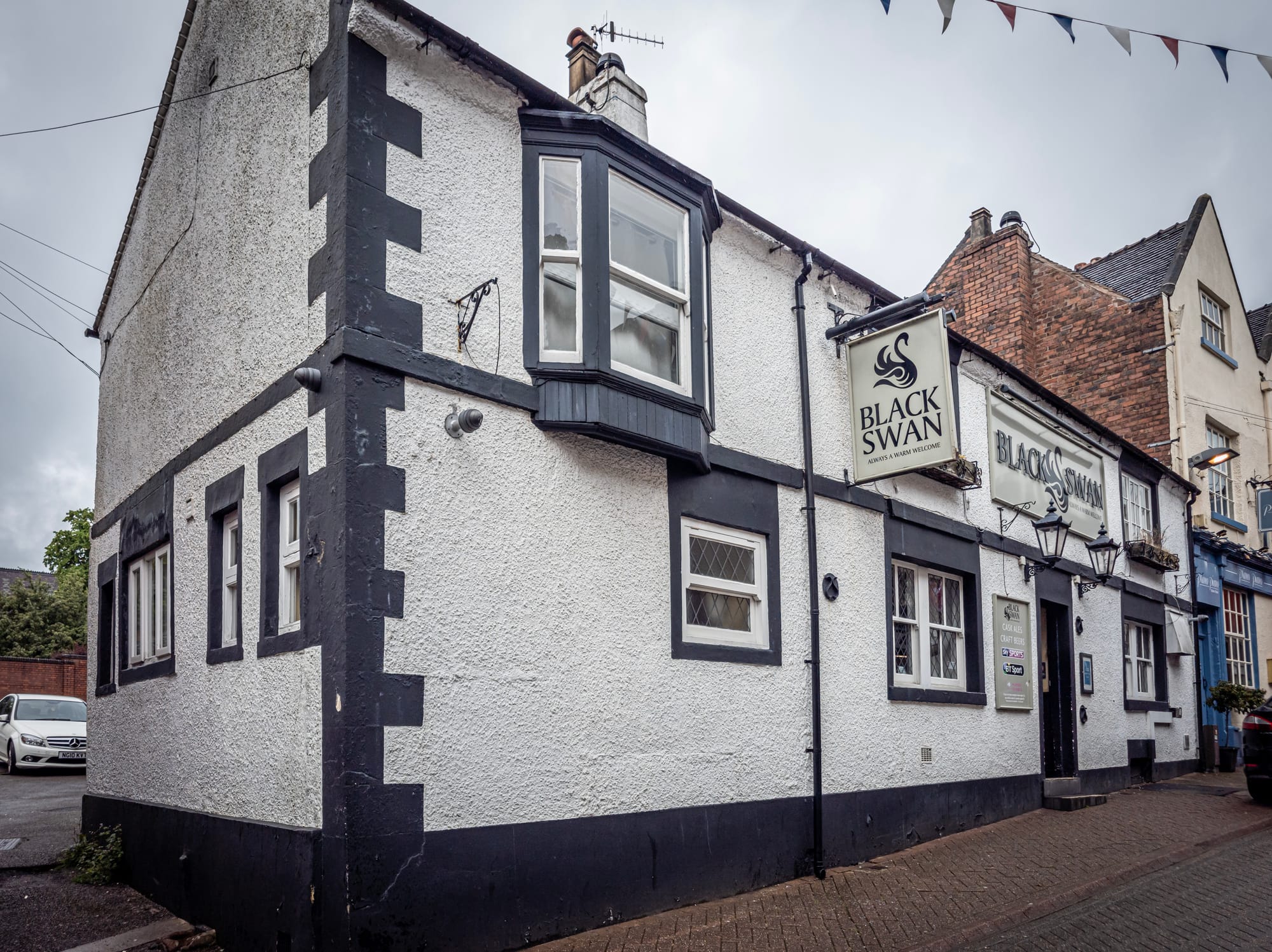
Other Timber Buildings in Leek
Leek is home to several other significant timber-framed buildings, each with its historical narrative. Nos. 2-4 Church Street, on the north side of the marketplace, incorporate remains of a 16th-century timber-framed building, likely jettied. The Black Swan Inn in Sheepmarket is another notable example, featuring cruck frames.
The Hall House, later the Red Lion Inn, built in 1607 by Thomas Jolliffe, is one of the largest timber-framed buildings in Leek. It was refronted in 1791, reflecting the transition to stone as the preferred building material by the late 17th century. The ornamental framing of the Roebuck Inn and the former Black's Head indicates that timber was used not just for practicality but also for display. Stone, however, became the dominant building material, with examples visible in party walls and other structures like no. 47 Derby Street and no. 13 St. Edward Street.
In the late 17th century, stone became the preferred building material, reflecting changing architectural tastes and advances in building techniques. Greystones in Stockwell Street, with its symmetrical stone front, exemplifies this transition. Despite the 18th-century brick façade, stone gables are still visible in buildings like no. 7 Stockwell Street, showcasing the layered history of construction materials and styles in Leek.
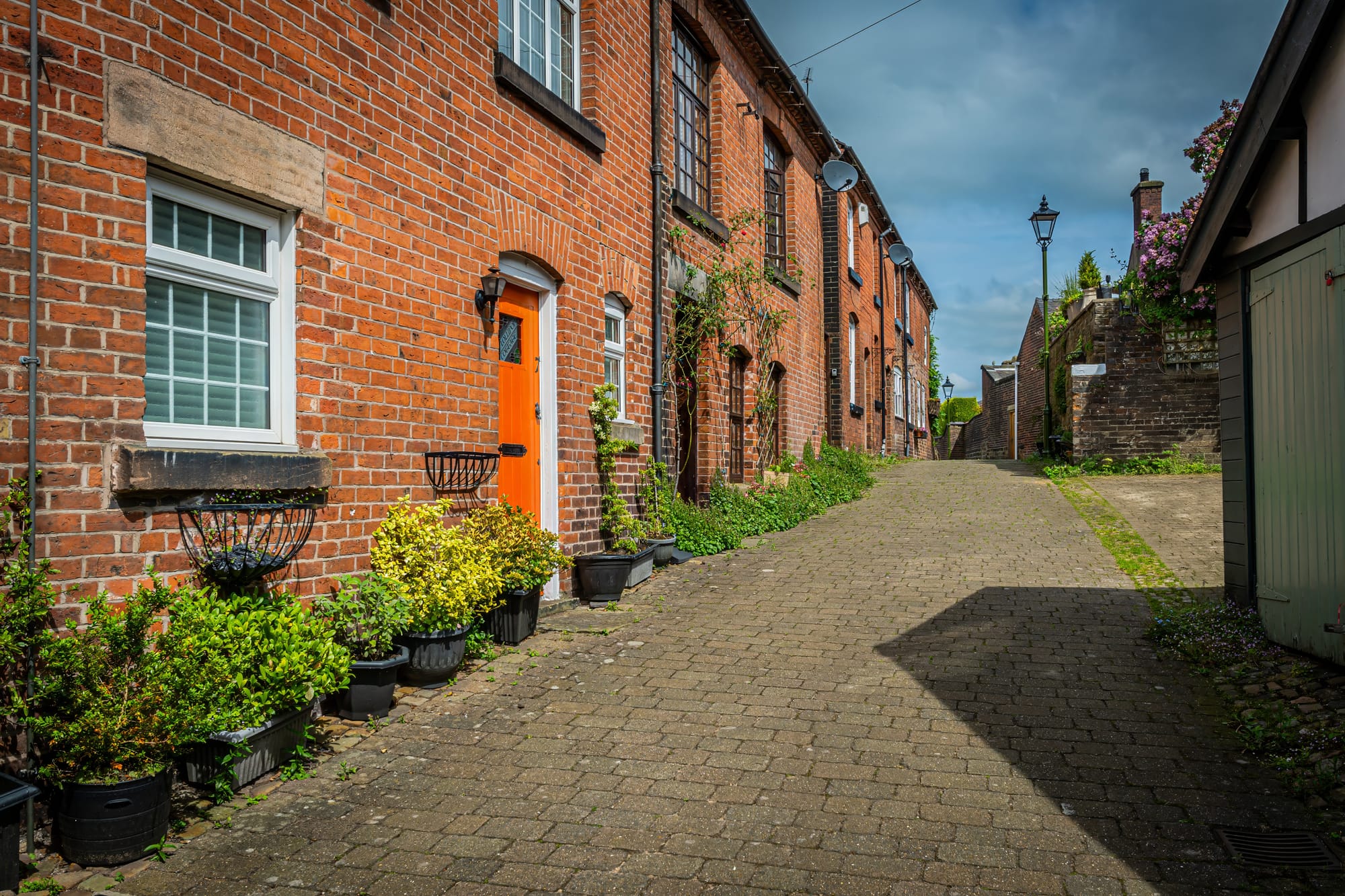
Naylor Yard: A Hive of Industry
Located behind Clerk Bank, Naylor Yard was a bustling centre of industry, producing mineral water under the direction of William Haywood, the landlord of the Golden Inn. The yard was named after nailers who worked there, and by 1835, it was a hive of industrial activity, including workshops and garages. Notable individuals such as John Smith, a nail maker in 1835, contributed to the yard's industrious atmosphere. Today, Naylor Yard has been transformed into a row of beautiful homes, showcasing the area's evolution from industrial hub to residential enclave.
The transformation of Naylor Yard from an industrial site to a residential area reflects broader trends in urban development and the adaptive reuse of historical sites. The shift from manufacturing to residential use demonstrates the changing economic landscape and the importance of preserving historical structures while adapting them for contemporary needs.
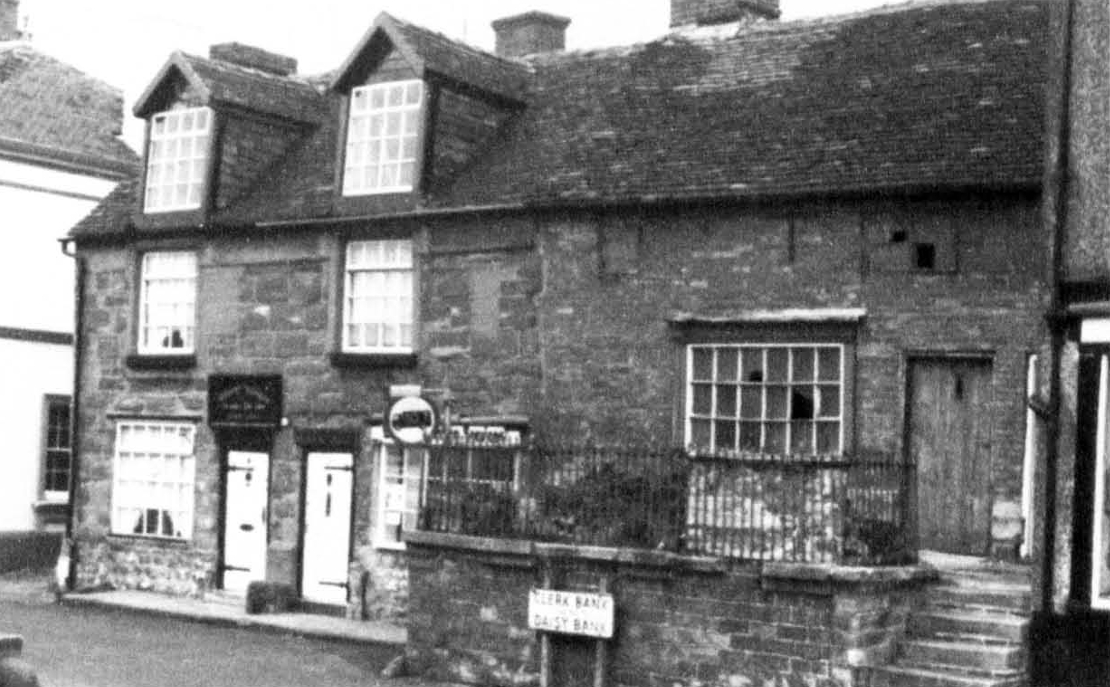
Modern Restoration
By the mid-20th century, No. 2 Clerk Bank had fallen into disrepair. However, a meticulous restoration in 1984 revived this historical gem, uncovering original features such as the wattle and daub construction, which can still be seen today. This restoration ensured that the cottage retained its historical integrity while being adapted for modern use. The process uncovered many original features that had been hidden for years, providing a window into the past construction methods and living conditions.
The restoration of No. 2 Clerk Bank involved painstaking efforts to preserve as much of the original structure and materials as possible. This included uncovering and restoring the wattle and daub construction, a technique that used a woven lattice of wooden strips (wattle) and a mixture of soil, clay, straw, and animal dung (daub) to create walls. This method, dating back to prehistoric times, offers insights into medieval building practices and the resourcefulness of past builders.
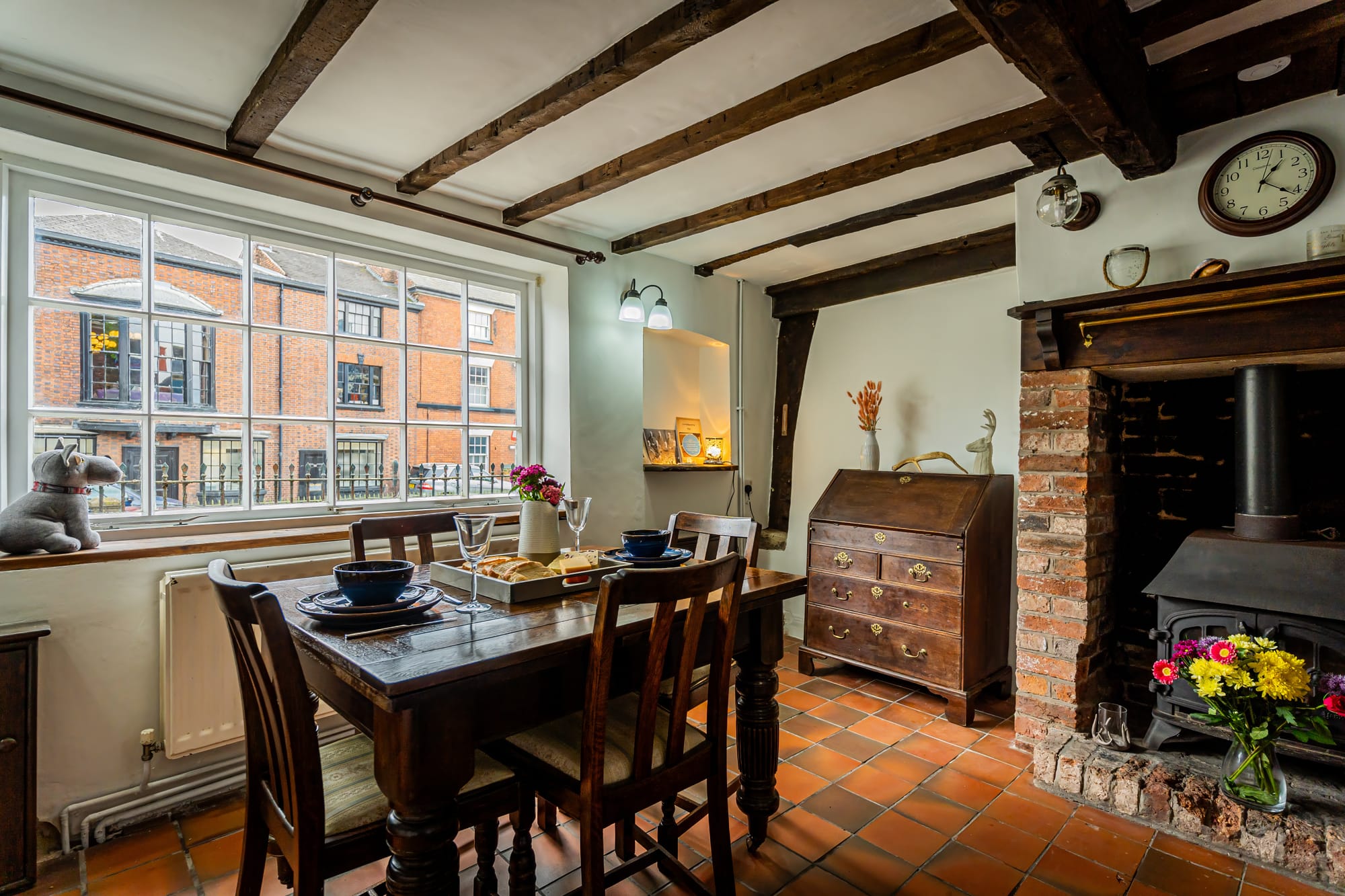
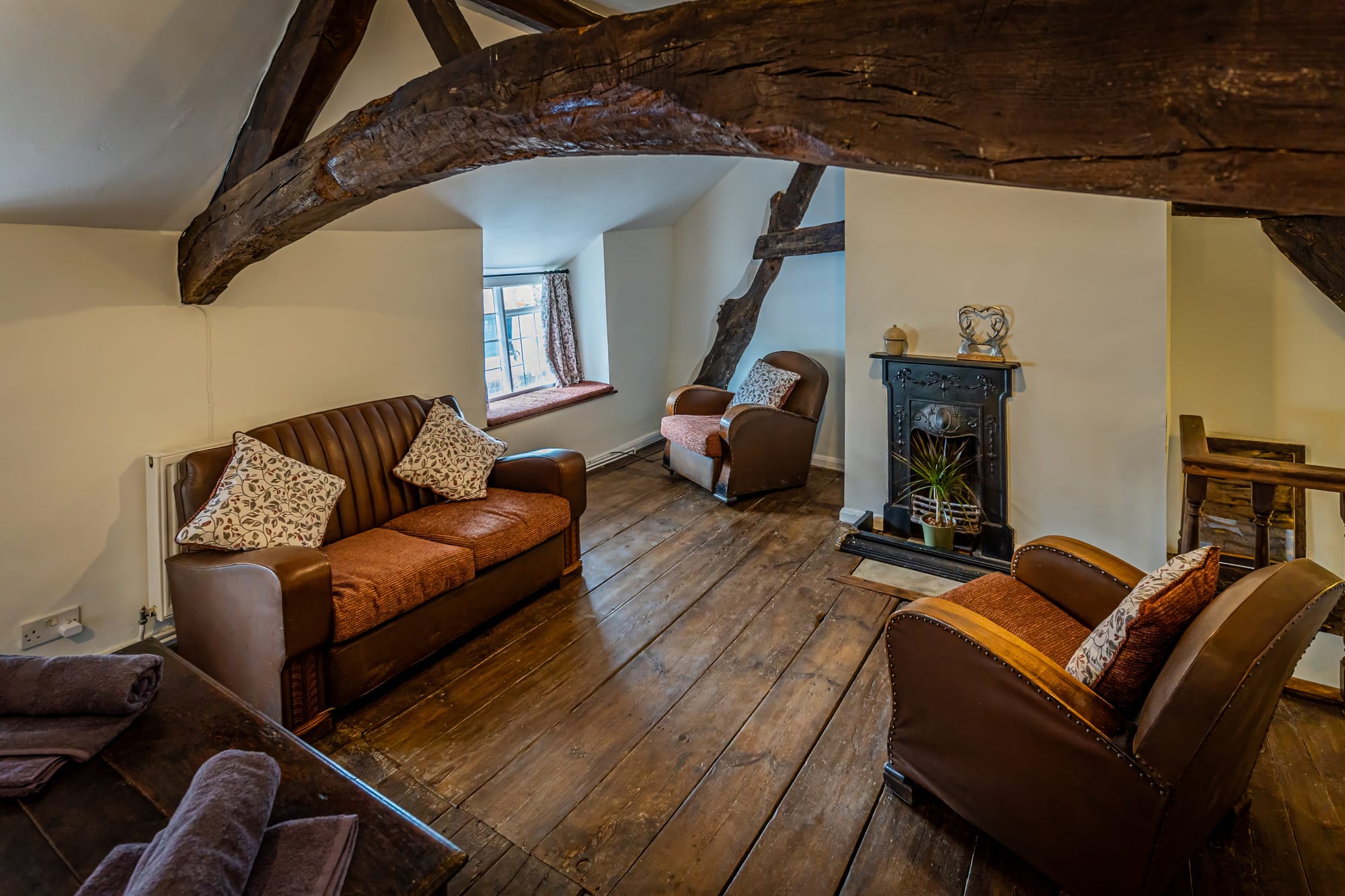
Current Use
Today, No. 2 Clerk Bank is operating as an Airbnb hosted by Laura Victoria Domestic Services, offering guests a unique opportunity to stay in a building steeped in history. The meticulous restoration ensures that visitors can appreciate both its historical significance and modern comforts. This charming cottage provides a cosy retreat while allowing guests to immerse themselves in the rich history of Leek. The Airbnb listing highlights the building's historical charm and its modern amenities, making it a popular choice for those looking to experience a piece of Leek's heritage.
Here is the Air Bnb listing - https://www.airbnb.com/slink/PSLRPPdR
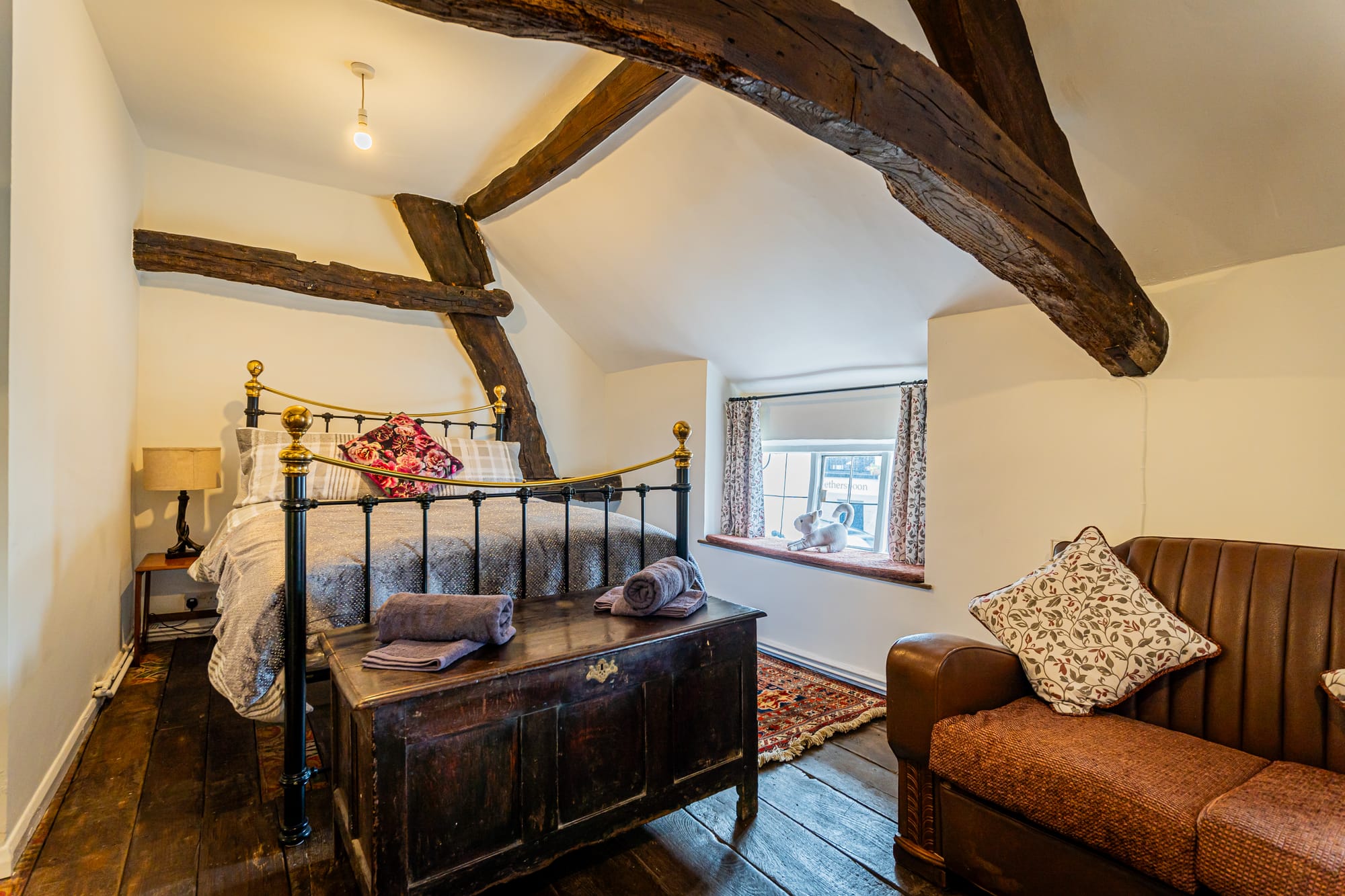
Staying at No. 2 Clerk Bank offers visitors a unique blend of historical ambience and contemporary comfort. Guests can explore the original architectural features, such as the cruck frames and wattle and daub walls while enjoying modern amenities. This balance of old and new makes it an attractive destination for history enthusiasts and casual travellers alike.
No. 2 Clerk Bank, Leek, is not just a cottage; it is an enduring witness to the town’s rich history, from a medieval market hub to a modern-day hospitality venue. Each timber beam and stone facade tells a story of the past, inviting visitors to step back in time and explore the layers of history that make Leek a fascinating place to discover. The restoration and adaptation for modern use highlight the importance of maintaining historical structures while allowing them to serve contemporary purposes.
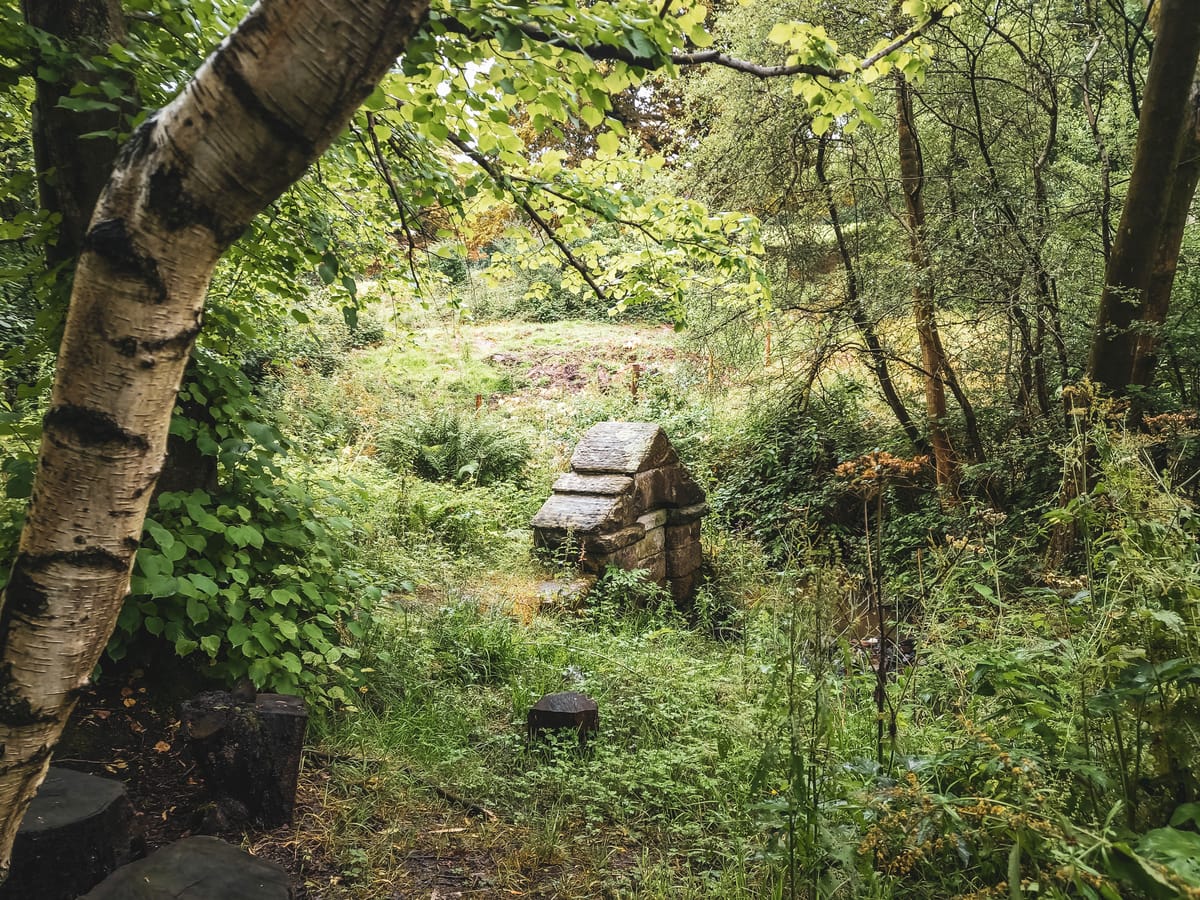

Check out my on-line shop for my local photography and art
Check out my recommended reading list
